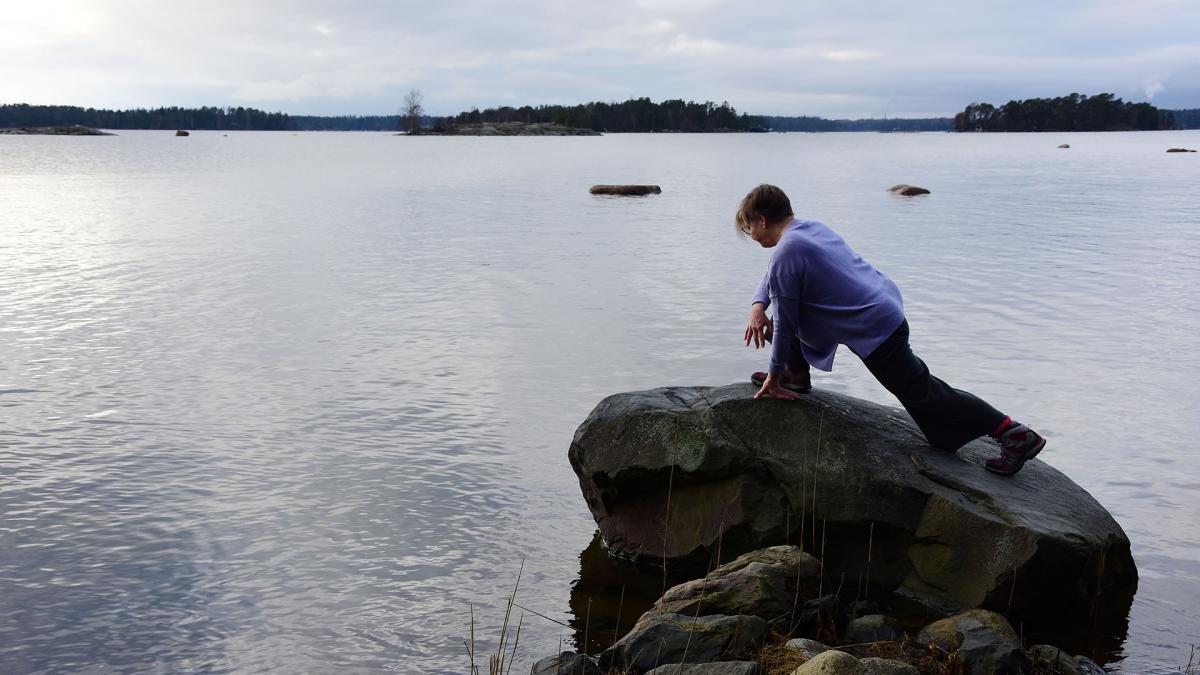Jaana Irmeli Turunen would like to see dancers have more avenues of using their expertise outside art – it is how a somatically aware body produces resistance 
For Turunen, holding an oppositional position has manifested in personal choices and acts of defiance.

Jaana Irmeli Turunen would like to see dancers have more avenues of using their expertise outside art – it is how a somatically aware body produces resistance
For Turunen, holding an oppositional position has manifested in personal choices and acts of defiance.
In her doctoral research, Turunen goes through the history of her artistic works from the 1980s onwards. As the title suggests, resistance plays a major role in this research. Rather than being a political or social manifesto, it is about taking distance and having a different bodily presence.
When reflecting on her history as an artist, Turunen realised that, in her own way, she has always held an oppositional position. This has manifested in personal choices and acts of defiance. For example, Turunen moved to the countryside in the 1980s, when dance art was concentrated in the largest cities. It was her first act of defiance against the mainstream hegemony.
“Doing it different isn’t something that just happens; it’s something you have to search for and carry out through your choices”, Turunen says.
Dancer changes the space
When it comes to her art, Turunen is more interested in the processes than the final result. Turunen says that the possibility of resistance lies specifically in the improvised and somatic methods that are part of the practices of dance.
Dancers have a great amount of knowledge and skills of the somatic kind, i.e. the kind that is based on internal body sense. It allows them to react to their environment in ways that resist an existence paralysed by the market economy and hard values – not in a provocative but in an immediate sense, Turunen explains.
Turunen practised her own kind of resistance in the artistic components of her research in 2005. In an event called Tanssin haja-alue, Turunen produced improvisation-based solo and ensemble dance artworks in public spaces.
In one of the pieces, Turunen was sprawled on a sofa in the Vuotalo library, eating chocolate and reading women’s magazines. Although the sofas at the library invite visitors to relax, Turunen claims that no one dares to spend time there the same way they do at home.
“We are constantly negotiating the limits of bodily presence in a public space. How you can and can’t be and move”, Turunen says.
When a group of teenagers happened upon Turunen, they first questioned her sanity. When she explained what she was doing, the teenagers were inspired to share their own experiences with dance and even show off their dance moves.
“In that moment, something happened that might not have without my dancer’s somatic literacy. It was an important encounter for me.”
Awakenings through art
Turunen emphasises that her research is not about applied art; it is about using dancers’ methods of improvisation and somatic skills in all encounters and in the production of physical resistance.
“I have felt that my role as an artist is to bring about change or raise questions through physical presence and vibration in each situation I am in.“
Turunen hopes that there will be more channels and opportunities for dancers to also extend their expertise outside of art. It is already happening, but focusing on somatic agency could open up new directions for it.
Public examination on 30 September 2022
Dance artist Jaana Irmeli Turunen’s doctoral research “Herkkää ja hiljaista vastarintaa – tanssin muuttuva toimijuus” (Sensitive and silent resistance – the changing agency of dance) will be examined at Uniarts Helsinki’s Theatre Academy on 30 September (Auditorium 1, Haapaniemenkatu 6, Helsinki). The opponent is PhD Kai Lehikoinen, and the Custos/monitor of the examination is Professor in Artistic Research Leena Rouhiainen. The occasion is in Finnish.
Jaana Irmeli Turunen’s doctoral research in the Taju database